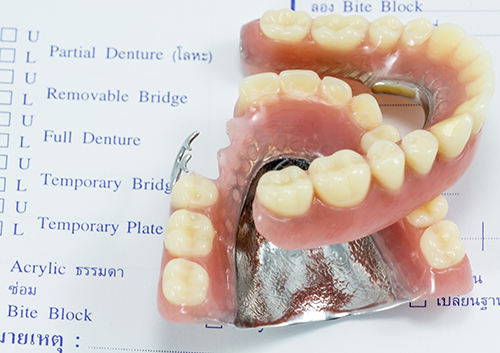Spring Cleaning
May 7th, 2025

Just like that, it’s almost summertime. As the spring season ends, perhaps these lighter, brighter days are inspiring you to do a bit of last-minute spring cleaning. Or perhaps they’re not. No judgment here!
What we can recommend wholeheartedly is finishing the season with a clean, sparkling smile. And we have some bright ideas for you!
Refresh Your Cleaning Technique
Tooth brushing can become so automatic that we don’t think about the basics anymore. And suddenly, we’ve finished brushing in half the time we used to, and, hey, how long has that floss been sitting on the counter, anyway? We suggest some mindful cleaning for a healthier smile.
- Spend two minutes brushing, at least twice each day.
- Make sure you reach all the surfaces of your teeth, inside, outside, and on top of your molars.
- Use short, gentle brush strokes, covering a tooth or two at a time.
- Angle your brush to clean along the gum line. Plaque around the gums leads to irritation and inflammation, and is a common cause of gum disease.
- Use vertical strokes to clean the inside of your front teeth.
- Floss at least once each day.
Good Cleaning Requires Good Tools
Since we’re tidying up, let’s talk about some helpful cleaning tools. Is your toothbrush looking a bit—long in the tooth?
After three to four months of brushing, your toothbrush bristles start to break down. Frayed and matted bristles can’t clean as effectively as a toothbrush in top shape. Each change of season is a good time to remind yourself to change brushes.
And, while you’re shopping, remember:
- Soft bristles are almost always all any brusher needs. Even medium bristles can be abrasive to tooth enamel. And brush gently—scrubbing is also abrasive.
- If you use an electric toothbrush, those toothbrush heads need to be replaced, too! In fact, because these brushes often have shorter bristles, heads might need to be replaced every two to three months.
- Use fluoride toothpaste to clean and protect your teeth.
- Don’t forget the floss!
If you’re not a fan of your current floss, take another look at the dental aisle in your local store. There are lots of new flossing options out there just waiting to be sampled. If manual flossing is difficult, consider a water flosser. Drs. Peter Vogel, Vijal Vadecha can help you find just the right floss for your one-of-a-kind smile.
And speaking of your dental team . . .
Some Cleaning Jobs Require Professional Help
Dentists typically recommend a professional cleaning at our Anthem office twice a year to make sure you’re free from built up plaque and tartar. How does your dental team go about getting your teeth cleaner than you can get them at home? With special training and special tools.
- Plaque and tartar need to be removed from tooth enamel above and below the gum line to prevent cavities and gum disease, and tartar can only be removed by a dental professional. Your hygienist might use an ultrasonic scaler, a hand scaler, or both to gently scrape away sticky plaque and hard tartar.
- Teeth are polished with a gentle abrasive to remove surface stains. This can be done with a special toothpaste applied with a small rotating cup, or with an air polisher, which removes stains with a stream of fine abrasive powder, water, and pressurized air.
- An expert flossing will remove any remaining plaque from between the teeth.
Bonus: Your hygienist can point out spots you’ve been missing to help make your home brushing and flossing more effective.
Clean and Bright
Increasing daylight can brighten your mood—and so can a whiter smile! Over time, smiles get dimmer without our even noticing, thanks to tooth-staining foods and drinks, medications, smoking, or thinning enamel as we age. If you’re feeling self-conscious because your smile isn’t its sparkling best, consider a whitening treatment.
- Whitening Toothpastes
Whitening toothpastes use chemicals and mild abrasives to remove surface stains caused by foods, beverages, and smoking. If you’d like to give a whitening toothpaste a try, ask Drs. Peter Vogel, Vijal Vadecha for suggestions.
- Whitening Strips and Gel Trays
Whitening gels can be applied at home with strips or tray kits. These peroxide-based gels are stronger than the formulas used in toothpaste, but can be irritating. Talk to Drs. Peter Vogel, Vijal Vadecha to learn how to achieve the best and safest outcome with these products.
- Office Treatment
Whitening treatments at our Anthem office are generally faster, more effective, and last longer because this process uses a more powerful whitening agent. That’s why it should only be applied by a dental professional, who will examine and prepare your teeth, protect the surrounding gum tissue, and monitor your treatment throughout.
Spring’s coming to an end, but taking care of your dental health is always in season! A clean smile isn’t just a more confident smile, it’s a healthier one. Talk to your dentist for more tips to create your best and brightest smile at any time of year.
What happens if I don’t have my wisdom teeth removed?
May 1st, 2025

One of the things Drs. Peter Vogel, Vijal Vadecha and our team at Daisy Mountain Dentistry monitor during your dental appointments is the growth of your wisdom teeth, or third molars. Third molars generally begin to erupt between the ages of 17 and 25. Wisdom teeth may require removal for many reasons, including pain, infection, or growth issues. While not all patients need their wisdom tooth removed, problems can develop if removal is not performed.
Overcrowding
Many patients have smaller mouths and jaws, which do not allow room for the third molars to grow in properly. If these teeth do erupt, overcrowding can occur. Your teeth will begin to shift or overlap each other. Wisdom teeth that erupt after orthodontic care is completed can cause the teeth to shift and negate the work performed.
Impacted Wisdom Teeth
When wisdom teeth are impacted, they are trapped below your gum line. Impacted wisdom teeth can be very painful and may be prone to abscess and infection. The impaction can lead to decay and resorption of healthy teeth.
On occasion, if wisdom teeth are not monitored properly, their growth can shift parallel to the jaw line. They can also shift backward and eventually interfere with the opening and closing of your jaw.
Greater Potential for Decay
Even when wisdom teeth grow in properly, the location can make the teeth harder to care for. This in turn can lead to the growth of more bacteria, and create health issues later in life.
If you do not have your wisdom teeth removed, they will require continued monitoring. Wisdom teeth are just as subject to decay and other problems as the rest of your teeth. Those that appear above the gum surface can often be extracted at a dental office in a fashion similar to any other tooth extraction. Impacted teeth are normally handled by an oral surgeon.
Pain in the back of the jaw and swelling may indicated wisdom teeth that are beginning to rupture or are impacted. A simple set of X-rays will determine the extent and direction of growth. Please do not hesitate to discuss your concerns during your next visit our Anthem office. We will be happy to explain wisdom teeth, and potential removal, as it applies to your specific case.
What did the first dentures look like?
April 24th, 2025

Remember hearing about George Washington and his wooden choppers? Not his tools for cutting down cherry trees, but his false teeth.
Actually, George’s teeth were made of ivory but were so stained that they appeared to be made out of wood. You might think those were the earliest dentures. In fact, the history of false teeth goes back centuries before President Washington.
Ancient Times
The earliest known dentures consisted of human or animal teeth tied together with wires. Examples of such dentures have been found in Egyptian and Mexican archeological sites. Other ancient peoples use carved stones and shells to replace lost teeth. These early dentures were probably made for cosmetic purposes. The materials they used were not likely to stand up to the pressure placed on teeth during eating.
The earliest surviving set of complete dentures were actually made out of wood (sorry, George). They were found in Japan and date back to the 16th century.
Human and animal teeth continued to be popular materials for dentures until the 20th century in some parts of the world. But the difficulty obtaining healthy teeth (and the risk of disease from unhealthy teeth) led dentists to search for other substances.
Modern Era
In the 18th century, dentists began using porcelain, ivory, gold, silver and even rubber as tooth substitutes. Dentures made with these substances could be used in eating. They were often ill-fitting, however, which may explain why George Washington looks puffy and glum in many portraits.
Porcelain and metals were the most popular denture materials until about 1950, when plastics and resins were developed. Tough and durable, these materials make up most of the dentures Drs. Peter Vogel, Vijal Vadecha and our team use today.
Still, what goes around comes around. Researchers at the University of Texas are looking at using human teeth for dentures once again. Only in this case, the researchers hope to use biotechnology to spur the growth of new sets of teeth to replace those lost over a lifetime.
Root Canal Recovery
April 17th, 2025

Anyone who has had a compromised tooth knows that the amount of discomfort it causes can be extremely unpleasant. Although no one looks forward to a root canal, this procedure is actually the best way to both eliminate pain and save your tooth. If the pulp inside your tooth is infected or damaged, a root canal is probably necessary.
The process is relatively straightforward and can take place over one or two visits to our Anthem office. The area around the tooth is numbed, the pulp is removed from the inside of the tooth, the area is thoroughly cleaned, and a temporary filling or crown is placed on the tooth to prevent bacteria and food from entering the site. A permanent crown will be fabricated and affixed to the tooth at a later visit.
Once your root canal is finished, recovery is usually only a matter of days. What can you to keep yourself as comfortable as possible during that time?
- The area around the affected tooth might be somewhat sore or sensitive for a few days. Let us know, and we can talk about medication to reduce pain and inflammation. If you are prescribed antibiotics, be sure to take the entire course of medication as directed.
- Taking an ibuprofen (if this is a pain reliever that is safe for you) before the anesthetic wears off will reduce the soreness in the hours immediately after the procedure.
- Wait until the numbness is gone before eating to avoid biting down on a temporary filling (or your tongue). Hot drinks are also best avoided.
- Avoid chewing on the side of the affected tooth until the restoration is complete. A soft diet is recommended for the first several days—chewy, sticky, and crunchy foods should wait.
- Continue with regular brushing and flossing.
- Call Drs. Peter Vogel, Vijal Vadecha immediately if you experience severe pain or visible swelling, if you have an allergic response to medication, if your bite feels uneven, or if you lose the temporary filling.
Follow the instructions we’ll give you carefully, and feel free to call us with any concerns. We want to ensure that your root canal is as pain-free and worry-free as possible.


